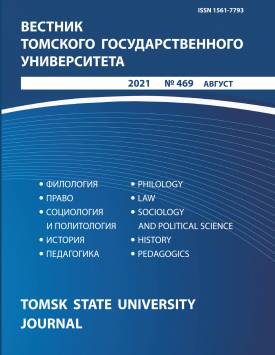A Differentiated Approach to the Construction of Wellness Activities for Adult Women With Different Types of Vegetative Regulation
The article shows the feasibility of using a differentiated approach in developing the technology of health-improving activities for women of the second mature age based on the type of autonomic regulation. The aim of the study is to experimentally substantiate a differentiated approach in the design and implementation of health-improving technologies for women of mature age, taking into account the type of autonomic regulation. The research was carried out in three stages. At the first stage, preliminary pedagogical testing and examination of women of the second mature age were carried out: typological features of physical development, physical fitness, vestibular stability, and the state of the cardiovascular system in women with different types of autonomic regulation were revealed. At the second stage of the study, the technology of health-improving activities and complexes of physical exercises for women of 30 to 50 years old, taking into account individual-typological characteristics, was developed. At the third stage, a pedagogical experiment was carried out, in which 70 women of mature age participated. Women were divided into control (CG, n = 35) and experimental (EG, n = 35) groups. To determine the initial vegetative tone, the method of cardiointervalography was used according to the method of R.M. Baevsky (1984). To assess physical development, the generally accepted methods of anthropometric research were used; vestibular stability was assessed using the Mera ST-150 stabilizer (Moscow); muscle strength endurance was assessed by the method of M. Weiss and A. Zembatov (1986). The studied indicators were registered at the beginning and at the end of the pedagogical experiment. The study showed that, in the control group, positive changes were revealed only in certain indicators. One of the reasons for the low efficiency of health-improving activities for women in the control group is the different reaction of the cardiovascular system to the same physical activity. Women with increased activity of the sympathetic division of the ANS responded to physical activity with significant increases in heart rate and blood pressure (hypertensive type), while in women with a predominant activity of the parasympathetic division of the ANS, the response to the load was insufficient (increase in heart rate with insignificant increase in blood pressure), which led to a decrease in the training effect. In the experimental group, when planning and conducting classes, a differentiated approach was used based on taking into account the typological characteristics of trainees with different types of autonomic regulation. The selection of means, methods, forms of training, sports equipment, the choice of the pace and amplitude of the exercises, the dosing of the load made it possible to obtain a significant improvement in all the studied indicators characterizing the strength endurance of various muscle groups, the mobility of the spine, vestibular stability, physical development, the state of the cardiovascular system in the women of the experimental group.
Keywords
recreational activities, women of mature age, autonomic regulation, differentiated approach, physical exercisesAuthors
| Name | Organization | |
| Panchenkova Tatiana A. | Siberian State University of Physical Culture and Sports | tany.pa@mail.ru |
| Kudrya Olga N. | Siberian State University of Physical Culture and Sports | olga27ku@mail.ru |
References

A Differentiated Approach to the Construction of Wellness Activities for Adult Women With Different Types of Vegetative Regulation | Vestnik Tomskogo gosudarstvennogo universiteta – Tomsk State University Journal. 2021. № 469. DOI: 10.17223/15617793/469/30
